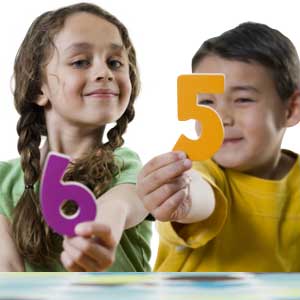Learning Disability

Do you notice signs that hamper your child's normal ability to listen, think, speak, read, write, spell or do mathematical calculations? Do these symptoms interfere mildly, moderately or severely with the learning process? Is your child suffering attention deficit with the mind wandering off for too long? Your child is not alone. One in ten children, nearly four million school-age children as well as teens have learning disabilities. Of this, close to 20% of the affected group have a type of disorder that hampers their concentration.
Recognizing, understanding and acknowledging the situation will successfully lead to the next step - That of finding proven ways and means of handling and coping with the situation. What is required for the child, apart from ample support so as to become an independent and successful individual? Read further to find valuable information concerning child learning disability.
Learning disability - a disorder
There are no clear-cut, visible signs, with which you can identify and ascertain the presence of learning disability. The symptoms are mostly subtle, which if left unattended can severely impact the child's development. While some children are likely to be affected with a single learning disability, it is not uncommon to find children with overlapping learning disabilities.
Mental health professionals opine that there are too many possibilities that cause learning disability. It is difficult to pin down a particular cause with certainty, but most learning disability is caused by the way brain develops. Possible causes for learning disabilities:
- Before birth, if the mother has had an accident or illness while pregnant
- 'Maturational lag' - slow rate at which a child develops in comparison with children of the same age.
- Though with normal vision and hearing, child misinterprets common sights and sounds due to a disorder of the nervous system.
- Premature birth or medical problems soon after birth
- Anomalies in brain structure or its function, possibly inherited
- Toxins in-utero or the environment impact
- Early childhood illnesses or physical accidents
Diagnosing Learning disability
It could be a situation in the school or an activity-learning area where the child is expected to follow or respond to instructions that is part of learning. The child may find it difficult to understand or use written or spoken language. The disability becomes apparent when you notice a disparity that remains unchanged even as the child ages, with no signs of improvements. There are different ways to diagnose each type of learning disability. Only after meeting specific criteria, a child or an adult is diagnosed as learning disabled.
Types of learning disability
Speech and language disorders: This includes developmental disorders of any one or a combination of the following.
- Finds it difficult to produce speech sounds. For example, saying 'thwim' for 'swim' - termed as developmental articulation disorder.
- Finds it difficult to use spoken language to express or communicate like calling objects by wrong names - termed as developmental expressive language disorder.
- Finds it difficult to understand what other people say and responds incorrectly or does not respond at all - termed as developmental receptive language disorder.
Academic skills disorders: The child as compared to students of the same age is slow in developing reading, writing, or arithmetic skills.
- Developmental reading disorder: Also known as dyslexia, the child has difficulties with accurate and/or fluent word recognition, spelling and decoding abilities.
- Developmental writing disorder: The child has problems with handwriting and/or may not be able to compose complete sentences without grammatical mistakes.
- Developmental arithmetic disorder: Also known as dyscalculia, the child has problems in recognizing numbers and symbols, with calculations or with abstract mathematical concepts.
Other learning disabilities: The symptoms that do not meet specific criteria are grouped under this type of disability.
Fine motor skills or gross motor disability: These are problems associated with activities that require coordinating teams of small muscles or large muscles. The child may have difficulty coloring, cutting, writing, buttoning, tying shoes, feels uncomfortable running or jumping.
Non-verbal learning disability: With a neurological disorder of the right cerebral hemisphere, the child finds it difficult to process nonverbal and visual-spatial information. As a result it results in deficits concerning balance and coordination, pattern recognition, mathematical ability and visual memory.
Attention disorders: Attention disorder per se is not considered as a type of learning disability. But attention deficit distracts the child, a student from being focused and seriously interferes with school performance. Hence, it can be understood as an accompaniment of academic skill disorder.
Schools for learning disability
A child diagnosed with learning disability can't be classified to have low intelligence. In fact he/she can have average or above average intelligence. The child is not different from other children of the same age group but just lacks certain skills essential for success at school and work or for coping with life in general. Getting the right is important in shaping them as successful and confident individuals that paves way to attain their goals in life.
Medications have no role to play in treating learning disability. It is only special attention and education, customized to the child that can bring about a marked improvement. There are special schools for the learning disabled. Certain schools have specific, special programs that meet their specific learning needs. The programs are designed strategically to meet the specific learning disability of the child. Gradually, the chills can bypass the disabilities and can develop needed skills. It could be in a separate all-day classroom or a special class the child attends for specific hours each week.
Top of the Page: Learning Disability
Tags:#Learning disability #types of learning disability #schools for learning disability #child learning disability #nonverbal-learning disability #student with learning disability
 Parenting
Parenting Stages of Growth
Precocious Puberty
Nutrition for Kids
Developmental Milestone
Empty Nest Syndrome
Infants
Sudden Infant Death Syndrome
Infant Gas Drops
Milk Allergy in Infants
Infant Reflux
Infant Nutrition
Infant Bathing
Infant Toy
Infant Colic
RSV in Infants
Asthma in Infants
Infant Brain Development
Babies
Baby Milestone
Baby Teething
Toddler Food Recipe
Baby Nursery Furniture
Baby Food Tip
Baby Monitor
Baby Burping
Children Care
 Regular Bedtime for Toddlers
Regular Bedtime for Toddlers Child Care
Kid Summer Camp
Kid Gym
Tween Parenting
Benefits of Breastfeeding
Oppositional Defiance Disorder
Attention Deficit Hyperactivity Disorder - ADHD
Kid Homework Help
Fine Motor Skill
Family Parenting
Single Parenting
Specialty Toy
Child Playhouse
Playgroup
Causes of Child Obesity
Autistic Child
Learning Disability
Toddler Activity
Activities for Toddlers
Child Safety Tip
Child Safety on the Net
Allergies in Toddlers
Top of the Page: Learning Disability
Popularity Index: 101,132

